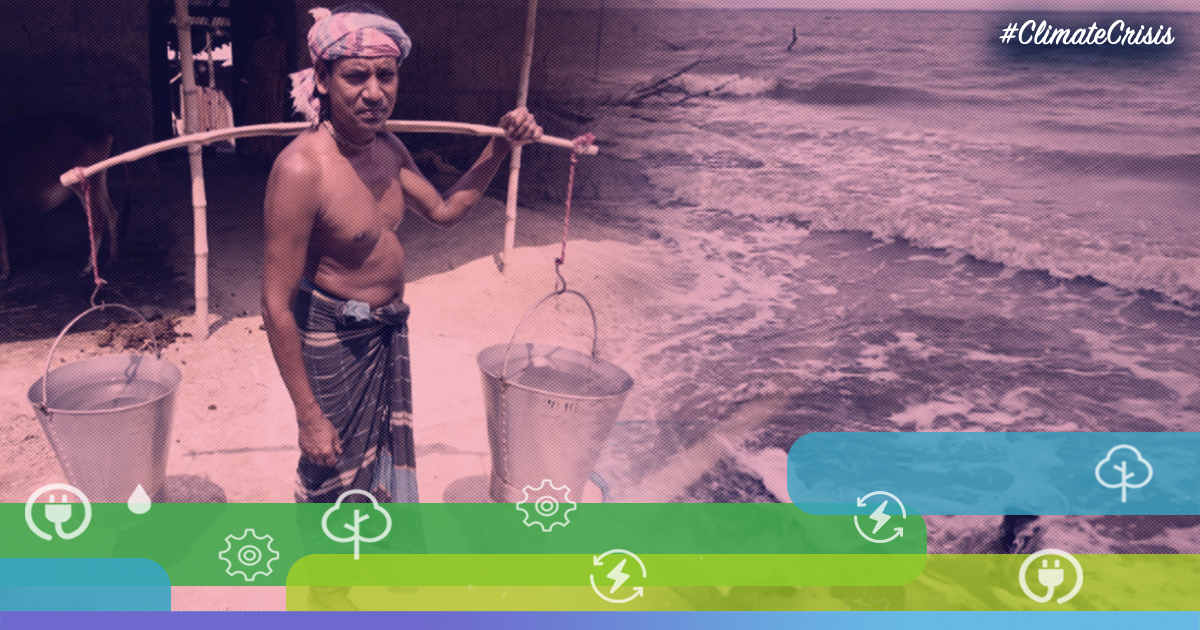55% Drop In The Availability Of Fresh Water Since 1960; 60 Crore Indians Experience Severe Water Distress
As we head into World Environment Day, The Logical Indian will be focusing on the #ClimateCrisis upon us and highlight the harsh realities about the environment we are living in. It will be our effort to bring out the true picture of the situation and offer ideas and solutions to mitigate the problem.
The global Sea Level Rise (SLR) is now being predicted to go up to 2 meters by the year 2100, found a new study published on the journal of Proceedings of the National Academy of Sciences (PANS). This measure is more than two times the prediction of the Intergovernmental Panel on Climate Change (IPCC) fifth assessment report which was published in 2014. Such a large increase in the level can potentially submerge (partially of fully) major coastal cities in the world including Mumbai, Amsterdam, New York, Kochi, Chennai, Shanghai and many more. Another study, published in the “nature” journal, seconded the observation as it noted that the Arctic Ice Caps, whose melting is one of the major causes of SLR, are melting at a much faster rate than was being assumed previously, so much so, that it’s destroying the equipment that is used to measure the melting.

In contrast, the recent data on the website and report of UN water stated that globally there has been a 55% drop in the availability of fresh water per capita since 1960. Currently, over 2 billion people live in places that experience severe water distress, in India alone over 600 million people live in areas that experience high to extreme water distress according to the latest analysis by WaterAid. Globally this number if expected to go up by almost 2.3 billion by 2050, which means that within the next 3 decades more than 4 billion people will be experiencing extreme water distress. This is a picture of an impending crisis that is not very far off. As the NITI Aayog report “Composite Water Management Index” makes it clear, “[already] India is currently suffering from the worst water crisis in its history.”

A Dismal State Of Affairs
70% of the earth is covered with water and it is only going to increase as more glaciers melt and the sea rises, but that is only going to deepen the already dangerous crisis that a large proportion of the world population is facing. Only 2.5% of all available water is fresh water out of which a major proportion is in the form of polar ice caps; this makes it a severely limited resource. The whole population of the world is dependent on it for its survival, needless to say that as the population increases the burden on fresh water resources will increase with it; then it becomes more alarming to consider that the world population is expected to rise to about 9.7 billion by UN’s estimates.
But increasing population is not the only factor that is contributing to this sharp decline. Water consumption and water withdrawal are the other two major factors that have a significant impact. According to the report by UN Water, the water use has been increasing at more than twice the rate of the population increases in the last century. Water withdrawal by industries and the dumping of waste in fresh water sources has degraded a significant proportion of the available fresh water. According to UN’s report, “2 million tons of human waste are disposed of in water courses every day; 15–18 billion m³ of freshwater resources are contaminated by fossil fuel production every year; and the food sector contributes 40 and 54% to the production of organic water pollutants in high-income and low- income countries respectively.” This has not even mentioned the water used by other industries like fashion, electronics and telecommunication, transportation and vehicle manufacturing, and so on.

The cruel irony
On the one hand we have the melting ice caps of fresh water which are resulting in an increasing sea level which is being predicted to displace more than 187 million people by the time it reaches 2m and have disastrous impacts on human lives and livelihoods; on the other hand we have the same fresh water being exploited, wasted, and degraded by human activities which is turning into an availability crisis and threatening the lives of millions.
As the process goes on, the competition for this limited resource is going to increase. 60% of all the fresh water on surfaces is obtained through internationally shared river basins. This has resulted in hundreds of water agreements globally, but as the resource depletes the cooperation between countries is bound to get difficult.
It is time that we start considering the full cost of water and the future of humanity if we continue on the same path on which we are right now in terms of our readiness to address and tackle the issues of climate change at an individual and a collective scale.


To assess the impacts of the rising sea levels, you can go through the interactive maps by the organisation earth time. To understand the state of water crisis and its impacts worldwide consider going through the reports of WaterAid and UN Water.
This article is part of a campaign to create awareness on environmental issues and the #ClimateCrisis that is impending on the earth.
Also Read: Affected By Water Crisis, Chennai Metro Turns Off Air Conditioners In Stations, Trains
 All section
All section














